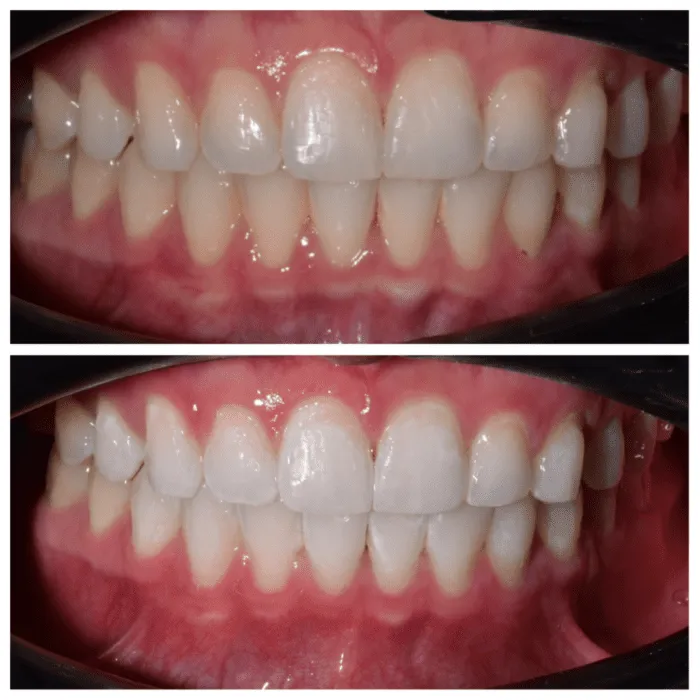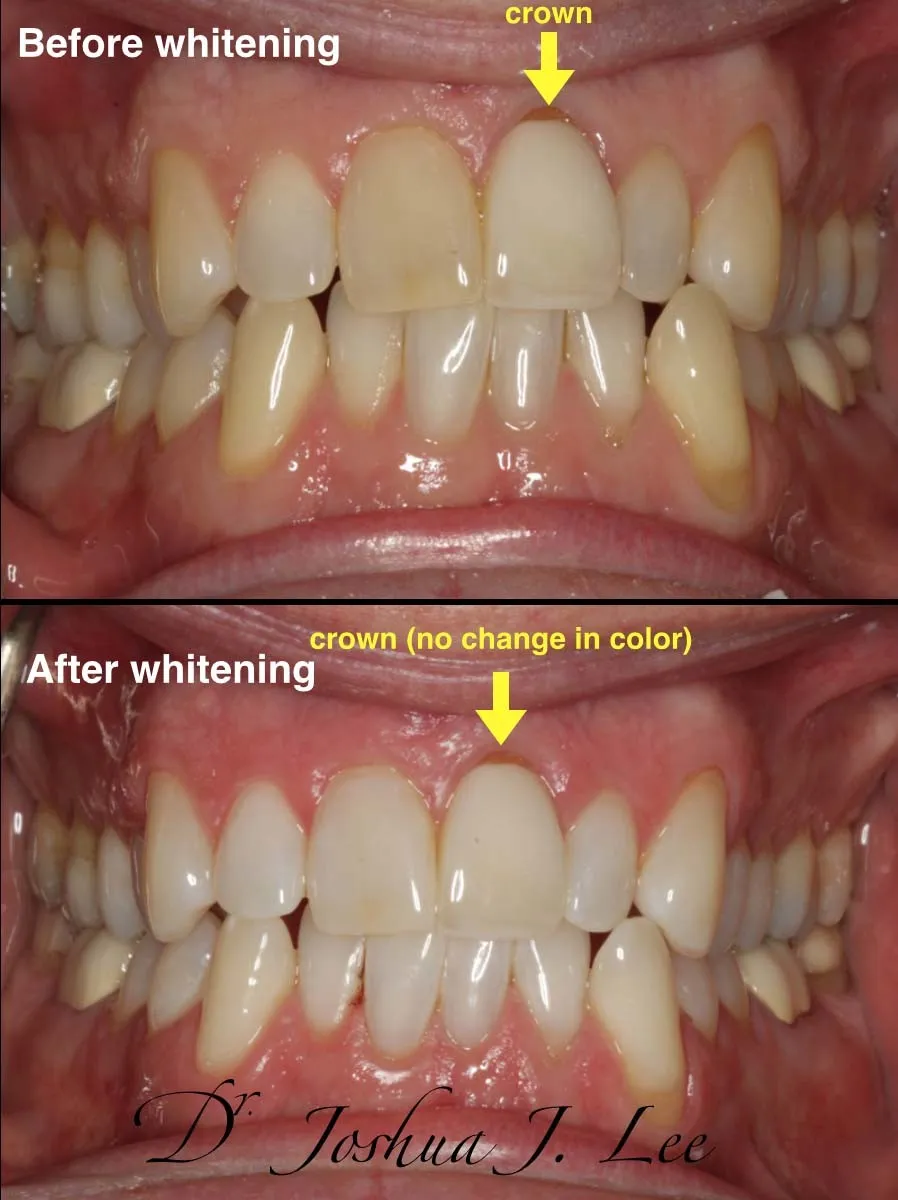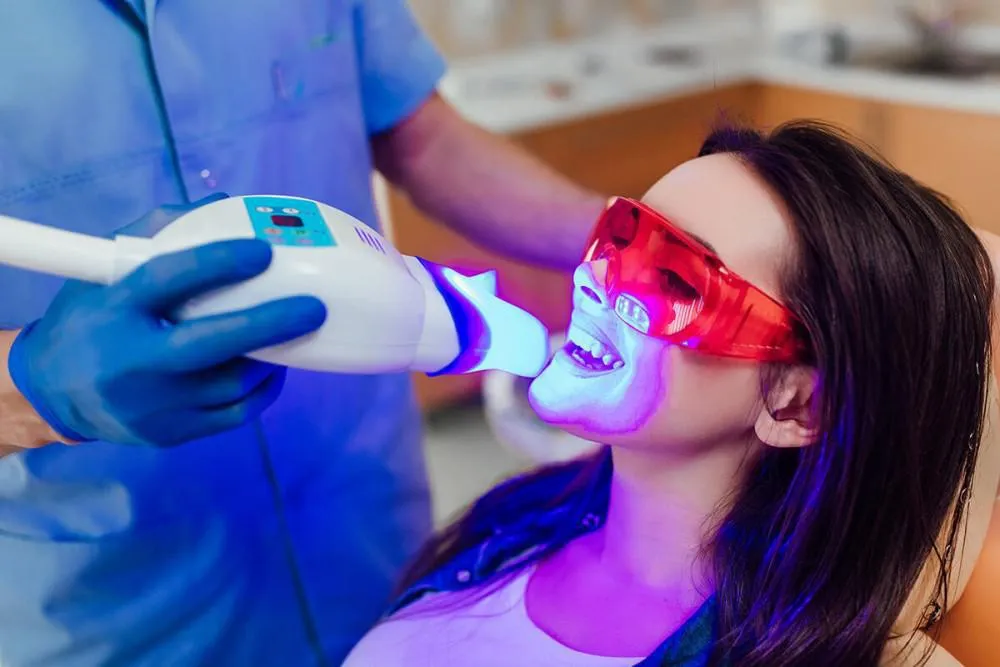Understanding Zoom Whitening Sensitivity
Zoom whitening is a popular and effective in-office teeth whitening treatment. While it can dramatically improve the brightness of your smile, a common side effect is sensitivity. Understanding why this happens is the first step in managing it. This article explores the science behind sensitivity, how Zoom whitening works, and provides actionable tips to minimize discomfort, ensuring you can achieve a dazzling smile with minimal hassle. Many people seek Zoom whitening to remove stains caused by coffee, tea, or aging, and the temporary sensitivity is often a trade-off people are willing to make for a brighter smile. It is essential to be informed about the process before you proceed to any cosmetic dental procedure.
The Science Behind Sensitivity
Tooth sensitivity after whitening is primarily related to the way teeth are structured and how whitening agents interact with them. Your teeth are covered in enamel, a hard, protective layer. Beneath the enamel is dentin, which contains tiny tubules that lead to the tooth’s nerve center. Whitening agents, typically containing hydrogen peroxide, penetrate the enamel and dentin to break down stain molecules. This process can irritate the nerves within the teeth, causing sensitivity. The degree of sensitivity varies from person to person depending on the thickness of the enamel, the number of tubules, and the overall health of the teeth. It’s a temporary reaction, and with proper care, it can be managed effectively. The process also affects the tooth’s hydration levels, which can make them temporarily more sensitive.
How Zoom Whitening Works

Zoom whitening uses a high-concentration hydrogen peroxide gel, applied to the teeth by a dental professional. A special light, often an LED, is then used to activate the whitening agent, accelerating the stain-removal process. This procedure typically involves a few 15-minute sessions, completed in a single visit. The high concentration and the activation light make Zoom whitening faster and more effective than over-the-counter products, but also more likely to cause sensitivity. The dentist will isolate your gums and soft tissues to protect them from the whitening agent. The effectiveness is often measured by the number of shades whiter your teeth become. While the results are remarkable, the potential for sensitivity is something to take into account. The procedure often requires an assessment of the patient’s oral health to make sure they are a good candidate.
Why Sensitivity Occurs After Whitening
The primary reason for sensitivity is the hydrogen peroxide in the whitening gel. As this agent breaks down stain molecules, it can also pass through the enamel and dentin, reaching the nerves within the tooth. This can cause temporary inflammation and irritation, leading to the sharp, often fleeting, pain associated with sensitivity. Another factor is dehydration of the teeth. The whitening process can remove some of the natural moisture from the teeth, making them more susceptible to sensitivity. Finally, pre-existing conditions like micro-cracks in the enamel or receding gums can increase sensitivity, as these conditions expose more of the dentin tubules to the whitening agent. The sensation of sensitivity is often described as a sharp, shooting pain, triggered by cold, heat, or pressure.
Top 5 Facts About Zoom Whitening Sensitivity
Fact 1 Immediate Sensitivity

Sensitivity can often start immediately after the Zoom whitening procedure. This immediate reaction is due to the direct impact of the whitening agent on the tooth’s nerves and the temporary dehydration of the teeth. The level of discomfort varies from mild to moderate, and usually subsides within a few days. It’s important to be prepared for this possibility by having sensitivity-reducing toothpaste on hand and avoiding triggers like very cold or hot foods and drinks. Your dentist may also provide post-treatment instructions to help manage any immediate sensitivity. This is a common experience, and the speed with which it resolves depends on individual factors. Some patients experience only slight discomfort, while others may have more pronounced sensitivity.
Fact 2 The Role of Hydrogen Peroxide
Hydrogen peroxide is the active ingredient in Zoom whitening, responsible for breaking down stains. However, it is also the primary cause of sensitivity. The concentration of hydrogen peroxide in Zoom whitening is significantly higher than in over-the-counter products, which is why it is more effective but also more likely to cause sensitivity. The higher concentration penetrates the enamel and dentin more rapidly, affecting the nerves. Dentists carefully monitor the application to minimize contact with the gums and other soft tissues, reducing the risk of irritation. Patients should understand that the effectiveness of the whitening is directly related to the concentration of the hydrogen peroxide, and a higher concentration may cause increased sensitivity. Your dentist can help explain the specific concentration used and what to expect.
Fact 3 Individual Variation in Sensitivity
Not everyone experiences the same level of sensitivity. Several factors influence how sensitive a person’s teeth become after Zoom whitening. These include the thickness of the enamel, the number and size of the dentin tubules, and any pre-existing conditions, such as gum recession or micro-cracks in the enamel. Individuals with thinner enamel or more open dentin tubules tend to experience greater sensitivity. Age can also play a role, as enamel naturally thins over time. Lifestyle factors like diet and oral hygiene also influence sensitivity levels. Your dentist will assess these factors before starting the whitening process, helping you to understand your personal risk level. This information helps manage expectations and tailor post-treatment care to your specific needs. It’s essential to communicate any previous sensitivity issues with your dentist.
Fact 4 Management Strategies

There are several strategies to manage sensitivity. Using a sensitivity-reducing toothpaste containing potassium nitrate can help block the nerve signals that cause pain. Avoiding very hot or cold foods and drinks is also important. Over-the-counter pain relievers like ibuprofen can provide relief. Your dentist may recommend fluoride treatments to strengthen the enamel. In some cases, custom-made trays with a lower concentration of whitening agent may be provided for follow-up treatments, reducing the risk of sensitivity. Following all the dentist’s instructions carefully is key to managing the sensitivity effectively. Proper care is also very useful to reduce the duration of the sensitivity. The key is to take proactive steps to minimize discomfort.
Fact 5 Sensitivity Timeline
The sensitivity timeline varies from person to person, but it typically peaks within 24-48 hours after the Zoom whitening treatment. Most people experience a gradual decrease in sensitivity over the next few days, with the discomfort usually subsiding within a week or two. In rare cases, sensitivity may last longer, especially if the patient has underlying dental issues. Following the dentist’s instructions and using recommended products can speed up the recovery. If sensitivity persists for an extended period, it’s important to consult your dentist to rule out any other dental problems. The vast majority of patients find that the sensitivity is temporary and well worth the results. Patience and proper care are essential during this recovery period.
Managing and Minimizing Sensitivity
Pre-Whitening Advice

Before undergoing Zoom whitening, inform your dentist about any previous sensitivity issues or dental problems. They may recommend a pre-whitening treatment with a sensitivity-reducing toothpaste or a fluoride application to strengthen the enamel. If you have receding gums, the dentist may recommend addressing this issue before whitening. Avoiding highly acidic foods and drinks a few days before the procedure can also help, as they can weaken enamel. It’s important to have a thorough dental checkup to identify and treat any cavities or other underlying issues before whitening. By taking these precautions, you can significantly reduce the risk of sensitivity. Good oral hygiene is essential to preparing the teeth for the treatment.
During Whitening Care
During the Zoom whitening procedure, your dentist will take steps to protect your gums and soft tissues from the whitening agent. They will isolate the teeth, use cheek retractors, and apply a protective barrier to the gums. Make sure to communicate any discomfort or sensitivity you feel during the process. The dentist may adjust the procedure or use techniques to minimize irritation. Try to remain still during the treatment to help the dentist with the application of the treatment. The dentist might also give you a break if you are experiencing significant discomfort. Proper communication is essential for the best results with the least discomfort.
Post-Whitening Remedies
After the Zoom whitening, follow your dentist’s post-treatment instructions carefully. This typically involves using a sensitivity-reducing toothpaste, avoiding very hot or cold foods and drinks for a few days, and possibly using a fluoride rinse. Over-the-counter pain relievers like ibuprofen can help manage discomfort. Stay hydrated by drinking plenty of water, which helps remineralize the teeth. Avoid foods and drinks that can stain your teeth, such as coffee, tea, red wine, and dark berries. Consider using a straw for certain beverages to minimize contact with your teeth. Regular dental checkups and good oral hygiene are essential to maintain your bright smile and oral health. The more you follow the aftercare instructions, the faster the sensitivity will subside.
When to Consult a Dentist

Severe or Prolonged Sensitivity
If you experience severe sensitivity that doesn’t improve after a few weeks, or if you have other symptoms like pain when biting or chewing, it’s essential to consult your dentist. These symptoms could indicate a more serious dental issue, such as a cavity, cracked tooth, or other problem. Your dentist will conduct a thorough examination to diagnose the cause of the sensitivity and recommend appropriate treatment. Ignoring persistent sensitivity can lead to more significant dental problems. Early intervention is always best. It is better to be checked, to ensure you are safe. Professional assessment is always recommended.
Other Potential Issues
In rare cases, Zoom whitening can cause other issues, such as gum irritation or changes in the tooth’s enamel. If you notice any unusual symptoms, such as bleeding gums, white spots on your teeth, or persistent discomfort, contact your dentist immediately. They can assess the situation and provide appropriate treatment. Additionally, if you experience any allergic reactions, seek immediate medical attention. Regular dental checkups are crucial for maintaining your oral health and addressing any complications. Your dentist can guide you through any issues that may arise. They will monitor your progress and ensure the best possible outcome.
